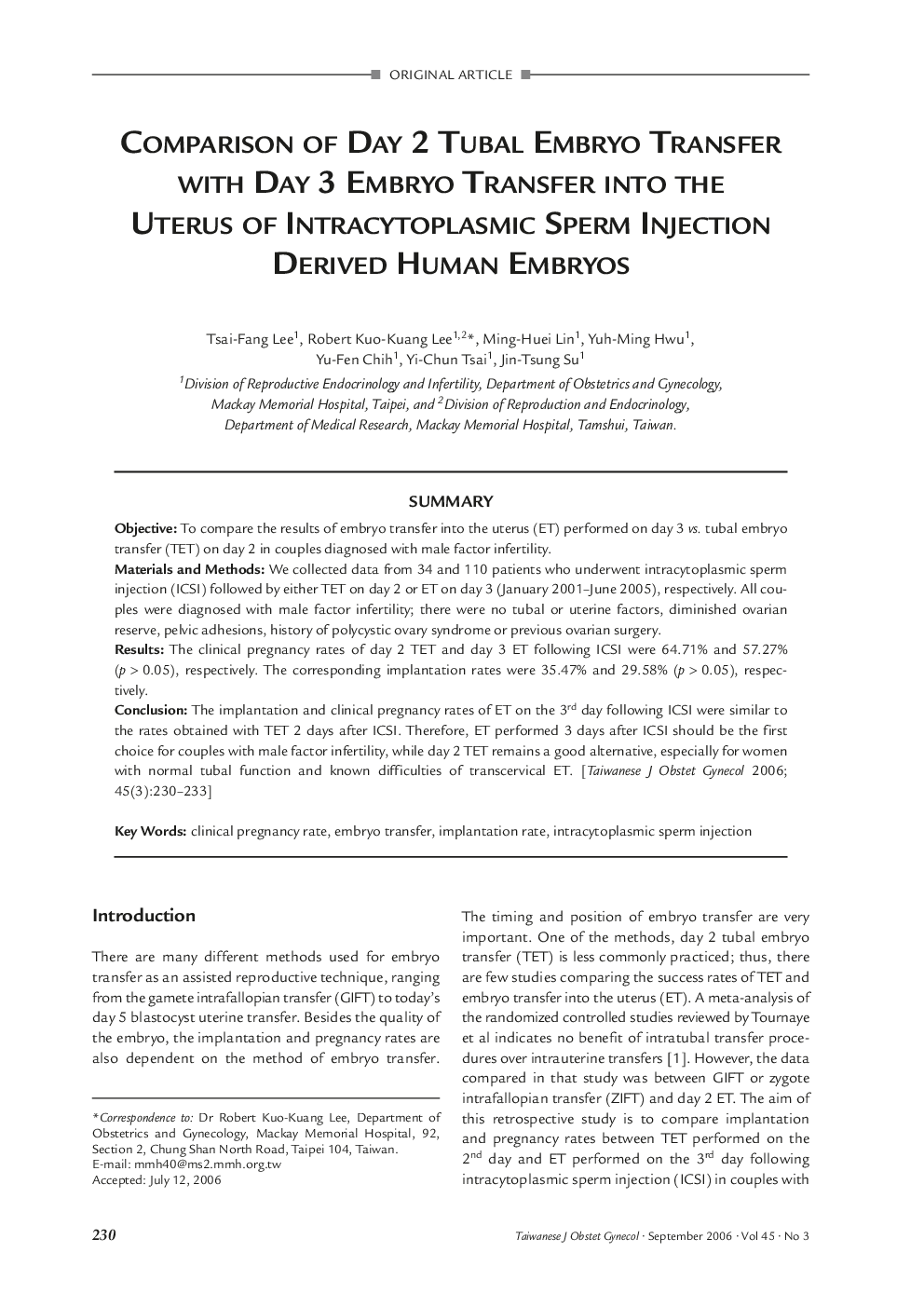| Article ID | Journal | Published Year | Pages | File Type |
|---|---|---|---|---|
| 3976239 | Taiwanese Journal of Obstetrics and Gynecology | 2006 | 4 Pages |
SummaryObjectiveTo compare the results of embryo transfer into the uterus (ET) performed on day 3 vs. tubal embryo transfer (TET) on day 2 in couples diagnosed with male factor infertility.Materials and MethodsWe collected data from 34 and 110 patients who underwent intracytoplasmic sperm injection (ICSI) followed by either TET on day 2 or ET on day 3 (January 2001-June 2005), respectively. All couples were diagnosed with male factor infertility; there were no tubal or uterine factors, diminished ovarian reserve, pelvic adhesions, history of polycystic ovary syndrome or previous ovarian surgery.ResultsThe clinical pregnancy rates of day 2 TET and day 3 ET following ICSI were 64.71% and 57.27% (p > 0.05), respectively. The corresponding implantation rates were 35.47% and 29.58% (p > 0.05), respectively.ConclusionThe implantation and clinical pregnancy rates of ET on the 3rd day following ICSI were similar to the rates obtained with TET 2 days after ICSI. Therefore, ET performed 3 days after ICSI should be the first choice for couples with male factor infertility, while day 2 TET remains a good alternative, especially for women with normal tubal function and known difficulties of transcervical ET.
